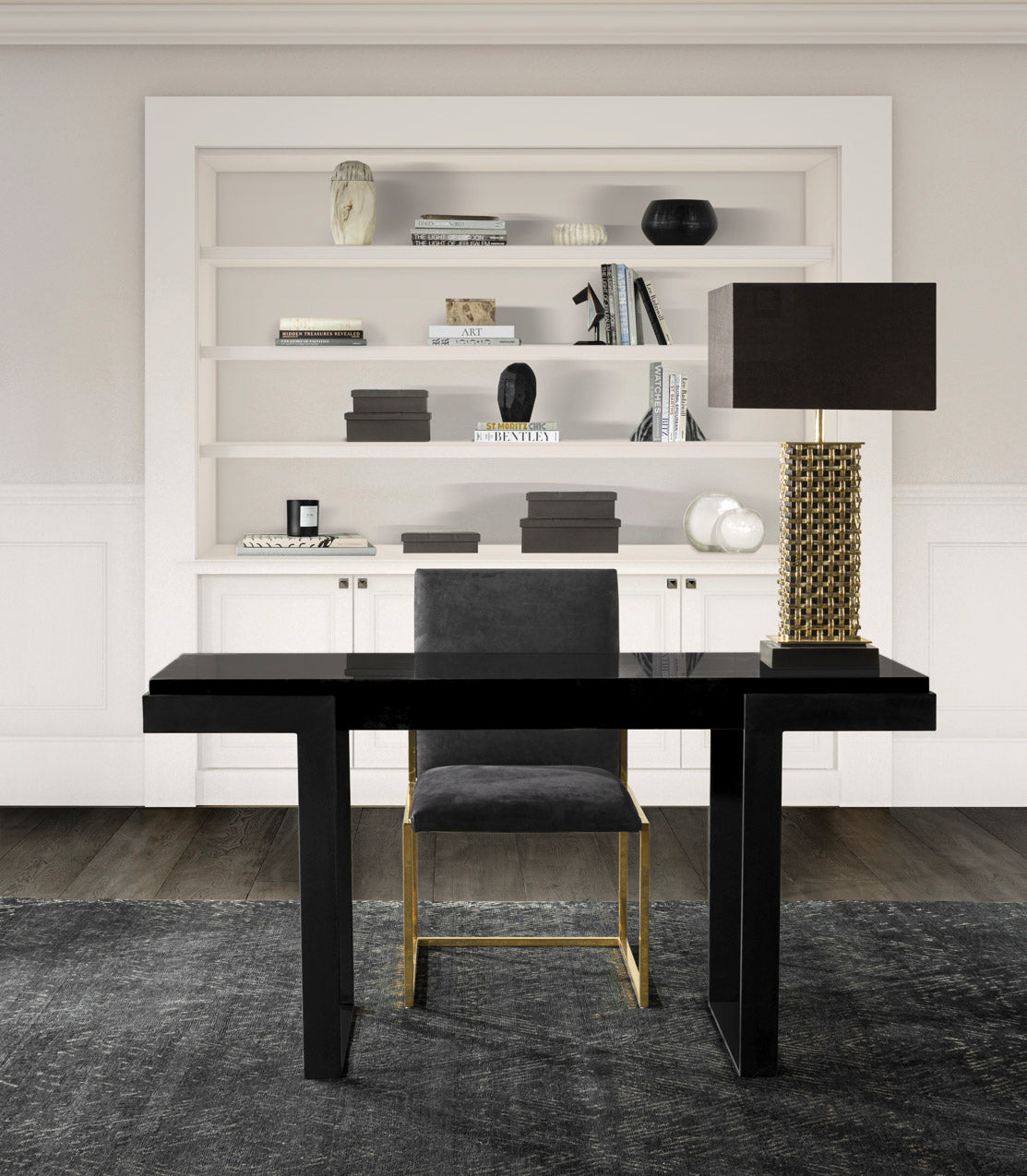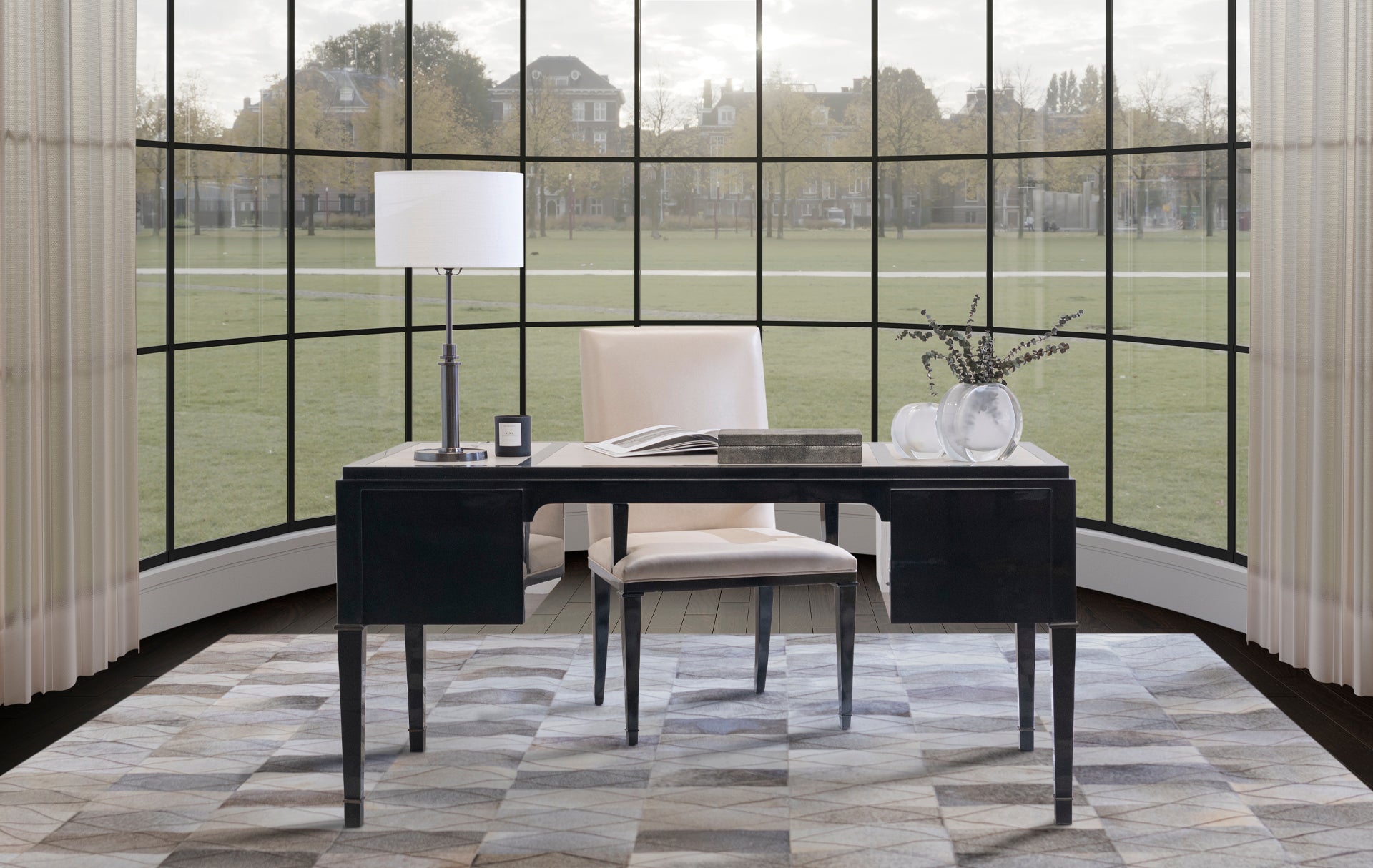Working Hard or Hardly Working: How to Design Your Optimal At-home Workspace

THOUGHT YOU WERE DONE WITH HOMEWORK FOREVER?
Working from home— to some it’s old news, others still may not have adjusted. For most of us quarantine goes like, I mustache you a BIG question and that is how will this pandemic permanently affect the work environment, and really, will we ever get to go back to the ‘real office’? Or has your make-shift home-office inconspicuously already taken its place? A question literally nobody seems to know the answer to at this point — so I guess we will shave it for later. Right now, it’s time to stop wondering about whens and hows, and instead, focus on creating the perfect at-home oasis—we mean, office, designed by you for you!
CHOOSE YOUR PLAYE— WORKER.
Of course everyone faces their own unique challenges when it comes to the work environment. For some, the collaborative, social aspect and formal atmosphere of office life is a real motivator— an element of work integral to the enjoyment some derive from it. If this is you, working from home with little to no external stimulation may be a real bummer and energy-zapper. For others, the sound of constant chitter-chatter at the office, phones going off left and right, the smell of a co-workers lunch are distracting to say the least and receiving that work-from-home email notice gave you major “snow day” vibes — until you realized now you’ll be expected to work and play full house with the kids at the same time. Whether you see yourself reflected in the former or latter type of person or somewhere in-between, working from home provides us all with the unique opportunity to design a workspace that fits our specific environmental needs and, as a result, give rise to the best version of our professional selves.
DESIGN-THINKING 101
First things first, you must ask yourself “What sort of work environment do I thrive in?” According to interior and product designer, Carla Leonor, when “planning for an office space, the first thing you have to consider would be the users. You have to know their preferences. You also have to know what their needs are”.
THE CHAMELEON
If you’re someone who likes to be surrounded by other bodies while you work and thrives off of the energy of others in an energetic office — and let’s be honest, some of us may have had just about enough of the whole self-isolation theme trending this year— then you most likely slay the game best when you play like a chameleon. Select a common area in your home as your place of work? Some ideas: the kitchen table? The dining room table? Maybe you can install a small table or desk in a corner of the living room? According to … placing the desk on a wall right next to other cabinets helps to create good continuity and doesn’t break the space up awkwardly. Although some may judge you for selecting a ‘non-traditional’ office space, only you know what works best for you. Designer Dani Arps tells House Beautiful, “I love a large surface to work, so I chose a dining table instead of a desk.” Allowing yourself to rethink the traditional shape of ‘an office’ can open up many undiscovered doors to your creativity and productivity. At the end of the day Leonor explains that personal space really is only from elbow to elbow and that’s all some people need. And let’s not forget — we all have vastly different housing situations and, therefore, have varying amounts and kinds of space available to us — The real winners though are those of us who master making the best out of what we’re dealt. Engineer Your Space blogger Isabella LaRue explains that she uses an indoor-outdoor rug, to define her office space as separate from the rest of her living room. If you position your table or workstation to face the wall, this will serve to give you a little privacy even in the busiest space in your house. Ultimately, the optimal type and amount of space for work differs from person to person.

THE MOUSE
You prefer a closed-door, let-me-work-in-peace situation? Then, according to Tikva Morrow, an editor at Hometalk, you need to “think like a mouse” and “find the quietest corner of your house,” typically a space far away from all the daily domestic commotion— so that would ideally be the farthest point away from the children’s bedrooms, the family room or kitchen. If you live in a smaller space, you can create a quiet area for yourself by designating a room with a closed door as your work space. According to blogger and blogger Tasia Cassandra, “if you don’t have a designated office in your house, that’s okay. Just find a place where you can set up a desk, a supportive chair and work relatively undisturbed.” A popular choice is installing a desk in the bedroom, which Cassandra also opted for.
T-IDEA
“Tidy room, tidy mind,” has been a popular meme and gift shop quote since 1947 apparently. Whether you work at a desk in your bedroom or at the dining table, it’s not a secret that Marie-Kondo-ing your space before you commence can work wonders for your mind and productivity— the less cluttered your work area, the less cluttered your mind, so ideally clear off anything you won’t be using during your work session that needlessly takes up physical and mental space. Cassandra suggests keeping the items you use the most, such as pens, pencils, the stapler, closest to you and organizing them by category. Utilizing storage boxes are a smart way to keep the space tidy and organized, explains interior designer and founder of ACASA, Living Maggie Wilson. Additionally, by choosing the color of style of storage boxes you can incorporate them into the design of the entire space, she adds. For extra storage space, it’s tempting to think that a strictly utilitarian desk with countless built-in drawers and filing cabinets is probably your best best. While a desk with drawers is excellent as you can quickly declutter by shoving all your junk into a drawer at 8:58 am before your morning zoom call, don’t just choose furniture and decorations whose form follows function— instead “combine function with style.” Of course if you’re working in a living space that serves as more than just a workspace, you’d probably benefit from straightening out the entire area— Melissa George from Polished Habitat suggests to “spend a couple minutes each night tidying up, so that the next morning you’re ready for business.” Of course if you share this space with others in your home, it may be more difficult to keep it tidy all the time, but at least this way you can share nightly clean up duty.
GROUNDING THE UPROOTED WHITE-COLLAR
Integrating natural elements into your home office can also help reduce stress and support a clear mind and concentration. This can be easily done by choosing furniture or decor pieces made of wood, stone and metal — all very timeless, classic, and elegant materials. Bringing in ‘green’ in the form of a rug, for example, or various statement decorative items, such as throw pillows or lampshades, can improve an “office workers’ quality of life.” Particularly bringing plants into a work space has been implicated in “enhanced outcomes in concentration and workplace satisfaction.” Duane Pitman, blogger at Cottage in the Oaks, explains that his “desk faces two large glass doors and windows…so [he] can always have a view outside.” We think this is a genius and such a simple, convenient way of both incorporating nature and greenery into your work ritual, while making great use of natural daylight — great for your eyes and mood during the dark and cold season, just remember to re-apply your SPF every two hours! If you find facing the windows is too distracting and the sunlight blinds you, then positioning your desk to face away from the window would suit you better— although you won’t be able to enjoy the view from this angle, we hear the backlighting on conference calls is bomb.
FIGHT OR F-LIGHT
The typical default responses to perceived threats and stressors of which we face plenty during a day at the home office during a global pandemic. A potential modulator? LIGHT! Dr. of Clinical Psychology, Chloe Carmichael, elaborates on how the light in our work area seeps into our work by affecting alertness, mood, eyestrain, and more and she recommends installing a lamp that uses a bright blue light to boost energy and keep you focussed while using yellow light when you are winding down and finishing off your day. Furthermore, designer Dani Arps tells House Beautiful that in designing her ideal home office, “she aimed for a light and bright feeling, which she says is inspiring for a creative mind." Selecting a space close to a good source of natural light, like a large window or screen door, can improve mood, as well as alertness — if you live in a place with very gloomy fall and winter seasons, here’s a pro-tip: Purchase a ‘medical daylight lamp,’ which can mimic the effects of natural daylight on productivity.

FROM THE WINDOW TO THE WALLS
Opt for a space with white or off-white walls, or perhaps walls that are lightly and brightly colored, such as bright green or yellow— these colors will instantly uplift you. Arps also suggests to steer clear of wallpaper that’s too detailed, as this can be very distracting and break the flow of your meditative space. That isn’t to say you shouldn’t use patterned wallpaper at all— choosing a subtle pattern for a wallpaper can keep the space interesting and provide some welcome relief to your eyes when you look up from your computer screen.
You want the space to be as pleasing to the eye as possible— this means incorporating sculptural furniture and statement pieces in various geometric shapes that are easy and soothing to look at and stimulate increased brain activity. Although you want the space to be decluttered and organized, that doesn’t mean it can’t be personal and stylish. Cassandra recommends choosing a color scheme to commit to and if your office is integrated into another room, then to carry over the design of the room to your workspace for good continuity. She also suggests incorporating elements that remind you of your goals and serve as personal motivators, such as inspirational quotes or photographs of your family and friends, for example — the space should be “neutral and professional, but also have your personality shine through” she states.
THE SMELL OF HARD WORK & THE SOUND OF ACHIEVEMENT
Dr. Carmichael similarly emphasizes the importance of creating a space for yourself that you want to spend your time in— the more comfortable you are in your work space, the longer you will want to remain there and the more work you’ll get done. She extends the discussion to even scents, air quality and soundscapes — which you can influence by recruiting essential oils, scented candles, for example, as well as installing an air purifier, or working near an open window. Carmichael emphasizes the tremendous benefit of varying auditory stimulation throughout the course of our work day. She says that changing up the type of music you play throughout the day, through, for example, programming your Google play or Amazon Alexa to do this automatically, can actually trick our brains into perceiving more defined daily structure. Since our environment isn’t changing all too much these days, a changing soundscape can simulate a changing environment.





